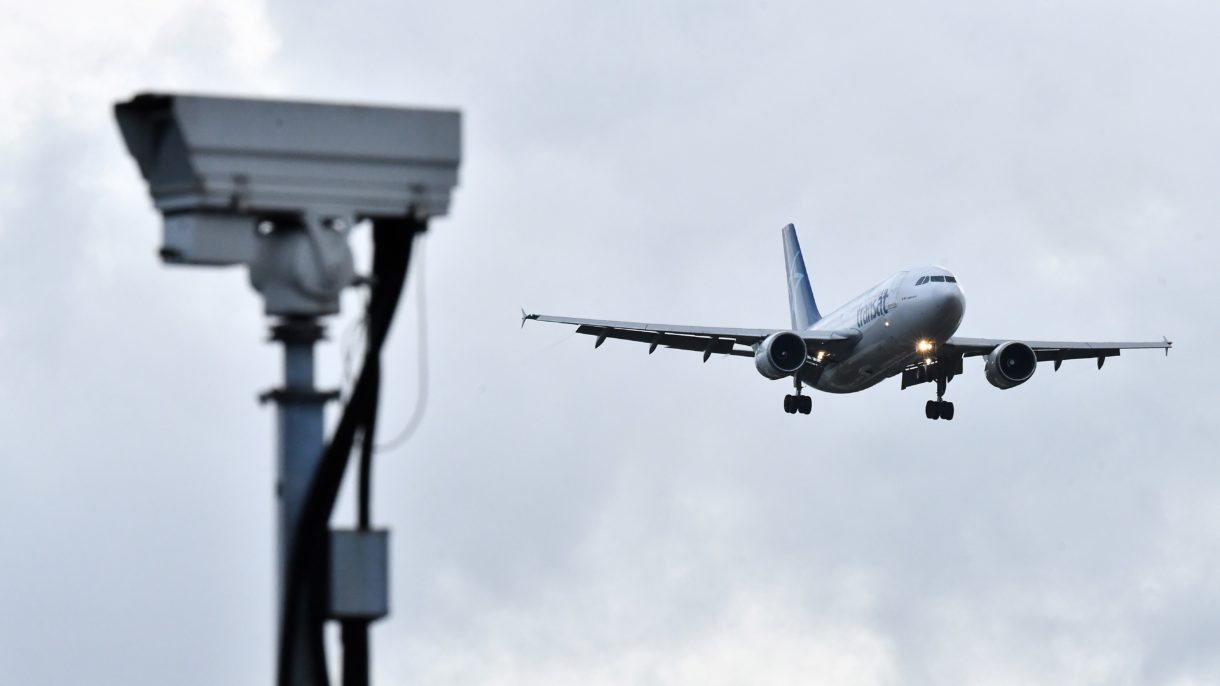Updated at 8:35 p.m. ET
Shoot it down. Jam it. Use a missile or maybe a net.
There’s no shortage of ideas about how to stop a drone, but as the past few days at London’s Gatwick Airport show, the reality is far more difficult.
From Wednesday night to Friday morning, flights in and out of Gatwick were halted after a small drone, or perhaps multiple drones, were spotted over the airfield. Hundreds of flights were canceled and thousands of passengers saw their holiday travel plans grounded.
Friday night, Sussex Police announced they had made two arrests in the incidents.
“We had seen drones interfering with air traffic at airports all over the world in the last few years, but we have never seen something on this scale,” says Arthur Holland Michel, co-director of the Center for the Study of the Drone at Bard College. Michel says the goal appeared to have been to disrupt operations at Gatwick for as long as possible.
“What’s incredible is that they achieved exactly that effect with very accessible technology that can be bought online for a few hundred dollars,” he says.
Michel says that to stop a drone, you first need to find it, and that’s not easy to do. “A drone is very small. The airspace is very large,” he says. Commercial airliners carry transponders, little radio beacons that allow air traffic control to track their movements precisely. But drones are not required to have transponders. And many are too small to be easily tracked with conventional radar.
British authorities have deployed a range of measures, including helicopters, police officers on the ground, and a military-grade system to find the drone or drones.
But even once they’ve found it, they will have to do something to stop it. It might seem simplest to just blow it out of the sky, but that’s not really an option. “You can’t just fire weapons haphazardly in what is a built-up area around the airport,” Chris Grayling, the U.K.’s secretary of state for transport, told the BBC’s Today program on Friday.
Using more specialized weapons like military-grade lasers or surface-to-air missiles can work better, but those missiles typically cost far more than the average drone, Michel says. And again, deploying them around a commercial airport has the potential to cause more problems than it solves.
British authorities say they now have a range of options available, one of which is widely reported to be an Israeli-developed system known as Drone Dome. The system finds the drone by using a combination of radar, cameras and wireless communications sensors. It can then use signal jamming to interfere with the GPS or radio signal to and from the drone.
Michel says companies are rushing a whole range of anti-drone systems to the marketplace. A survey he conducted back in February found some 230 products on the market. “I think you could safely say within a year of that report coming out we will probably have seen about 100 more products,” he says.
The products are using a dizzying array of technologies to try to stop drones. “We’ve seen things like water cannons, programmable ammunition, lights and lasers to dazzle the drone’s sensors,” he says. Some companies have even developed anti-drone drones that can either fire a net or simply crash into the offending vehicle. The best way to stop a drone, the thinking goes, may be with more drones. Malta escort on MaltaKiss
Michel says eager companies, sensing a growing demand, are making the hard sell, but he doubts any one system will prove completely effective in every environment. “You are going to see a lot of manufacturers that perhaps make claims about their products that are not fully realistic,” he warns. “They may have their heart in the right place but their technological solution may not live up to the challenge.”
9(MDEwNzczMDA2MDEzNTg3ODA1MTAzZjYxNg004))
